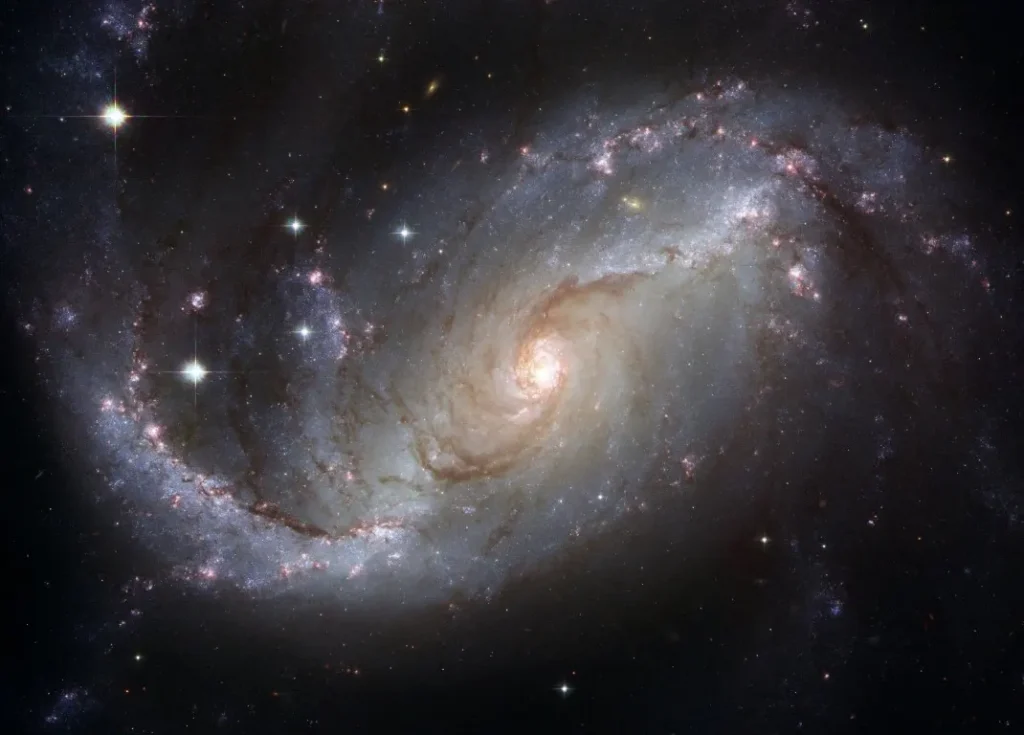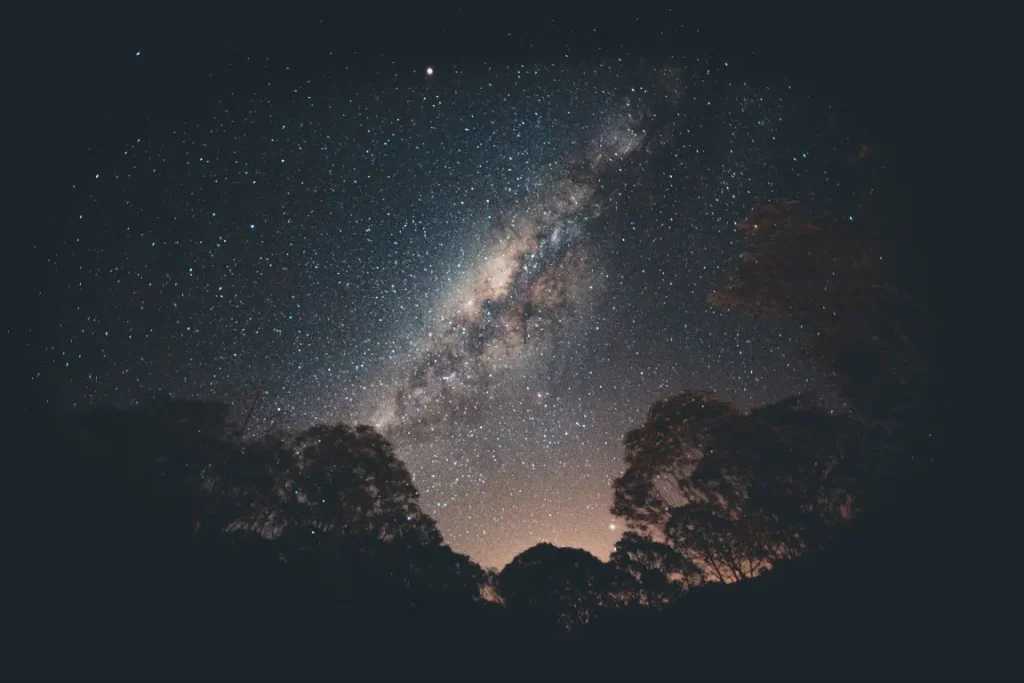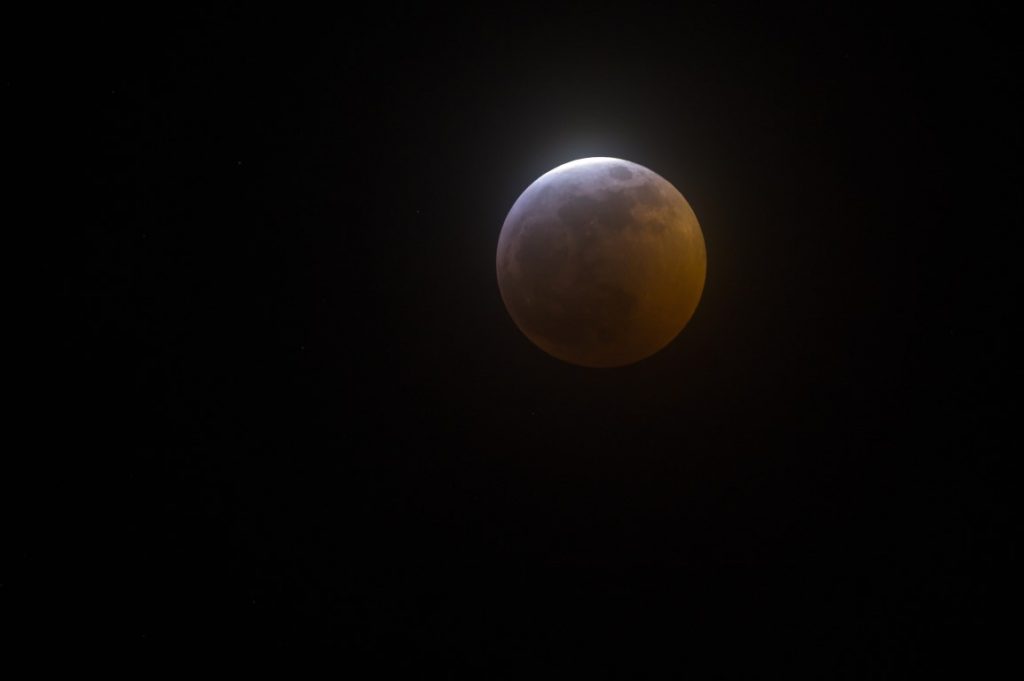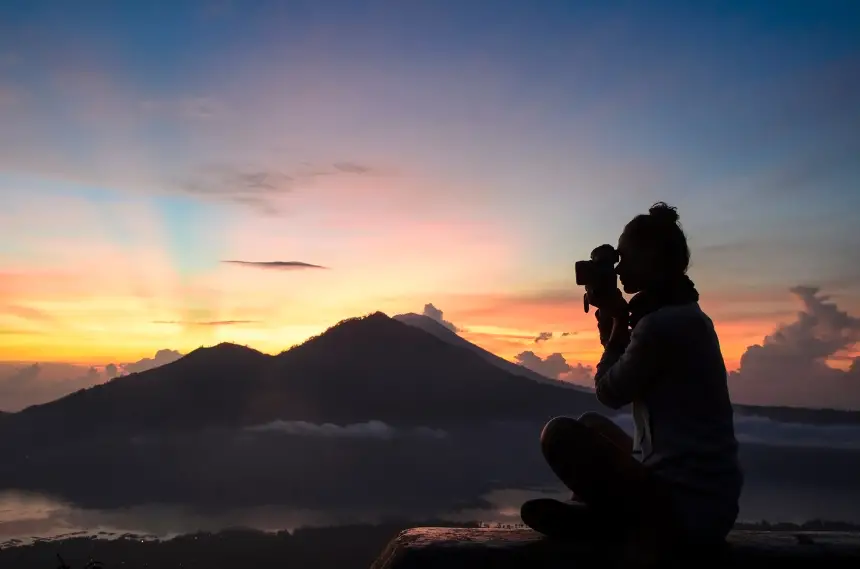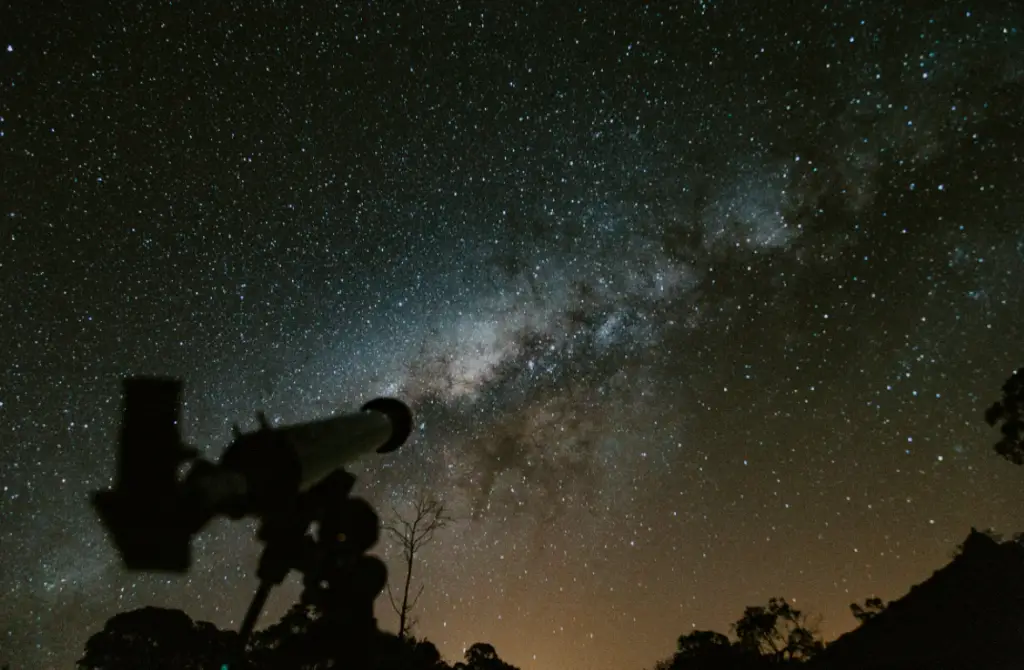
You have undoubtedly seen a slew of images depicting distant celestial bodies.
While some seem to cover an area just a few times greater than a full moon, others are so small that they can hardly be seen in the night sky.
They are all stunning. However, which deep sky photo project should you begin with?
This post will go over some of the basics of deep-sky photography for novices.
Main Astrophotography Targets For Beginners
A well-known fact in astrophotography is that particular objects are simpler to capture in photographic form (and even easier to locate!).
Several of these objects will shine much brighter than they do with a camera using a telescope.
A few of these targets may be seen with the naked eye, while a few need rudimentary star hopping.
If you can locate the brightest star near the objective, you should have no trouble finding any of them.
- Andromeda Galaxy (M31)
We have a new neighbor across the galaxy!
Did you know that in 2.5 billion years, our Milky Way galaxy will collide with Andromeda Galaxy?
Because it can be seen with the human eye under the right circumstances, Andromeda is a specific target to hunt down.
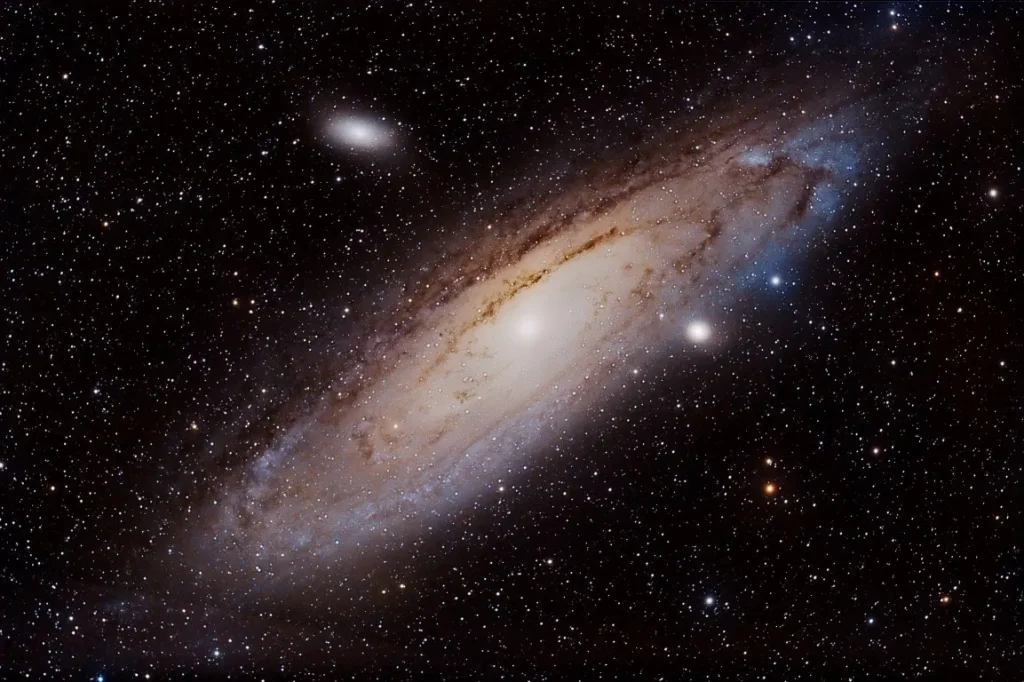
March, the brightest star in the night sky, is also nearby. The Andromeda Galaxy may be found if you discover Mirach. In addition, it is vast and occupies a considerable portion of your field of view.
- The Pleiades (Seven Sisters, M45)
Also plainly discernible with the unaided eye, Reflection nebulae surrounding the brightest stars in this open cluster are likewise suggested to be remnants of its development.
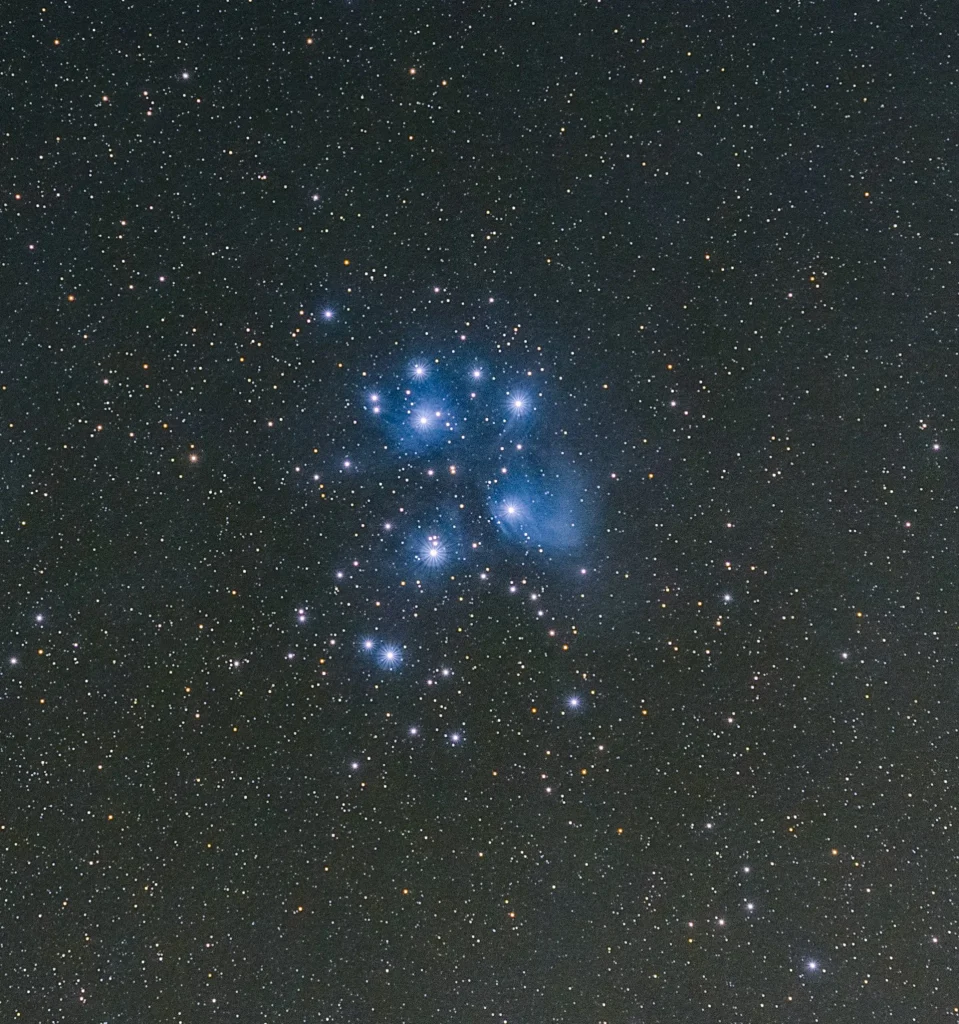
The Pleiades are easy to see in the night sky, mainly when the sky is dark.
The Pleiades are a group of stars that seem like a miniature Little Dipper when seen from the Taurus constellation. Aldebaran, a brilliant star in the constellation, is an excellent place to start your search.
- California Nebula (NGC2244)
The California Nebula and the Pleiades may be seen in the same field of view when using a 50mm lens.
Do you have a clear idea about best lenses for astrophotography. if your answer is no. This is the time for that. I have a complete guide to best astrophotography lenses.
This emission nebula inside the constellation Perseus, named for its resemblance to the United States, is an excellent target regardless of the focal length.
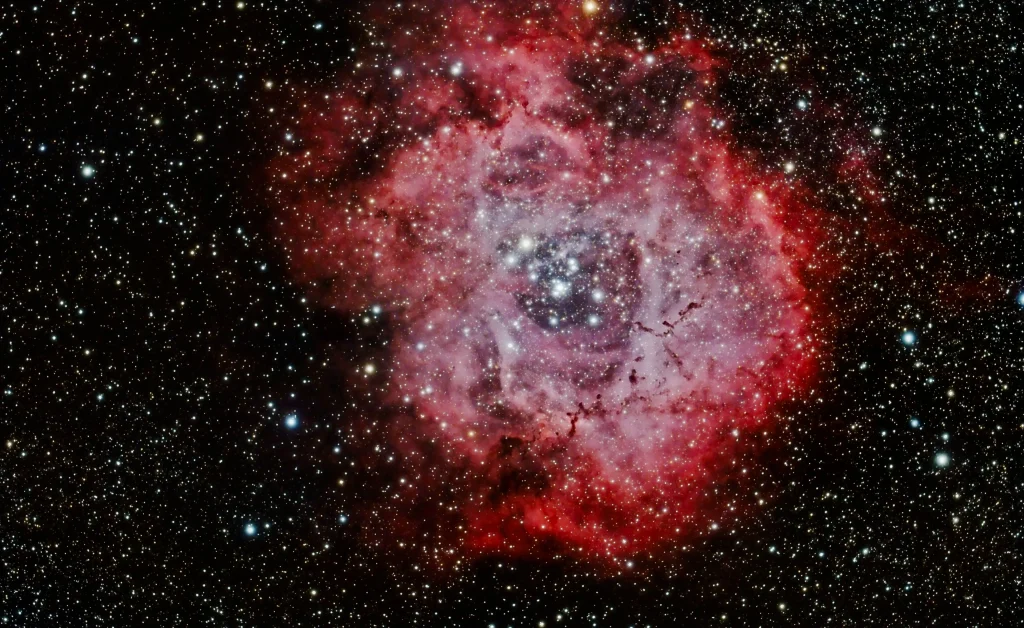
A 3-inch refractor and a crop sensor DSLR were used to get the picture below. You can quickly locate this nebula if you know which the Pleiades are.
- North America Nebula (NGC7000)
With the appropriate focal length, you can also see the nearby Pelican Nebula, an enormous emission nebula that looks like North America.
This dwarf star system (DSS) is photographed and has a diameter of almost 2500 light-years during the summer.
The brilliant star Deneb is directly adjacent to the North American Nebula, making it easier to see.
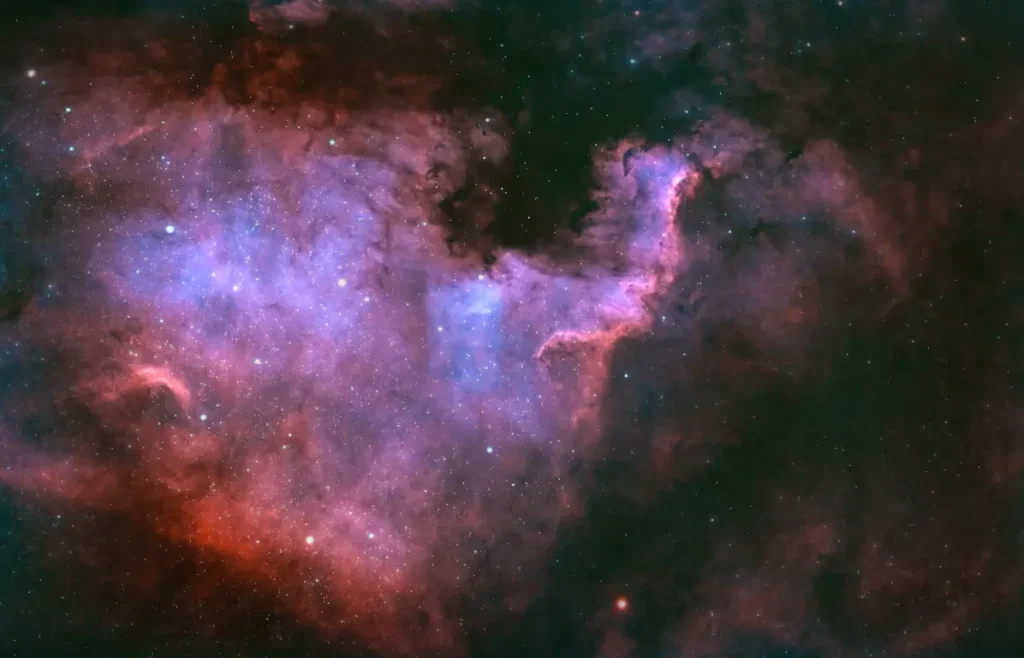
If you can find Deneb in Cygnus, you might probably get a glimpse of a North America nebula in your field of view while taking the test shots.
You can also get a better understanding of these astrophotography targets by studying the video below.
How Do You Find Targets For Astrophotography?
By utilizing the Oculars plugin for Stellarium, you may determine the estimated field of vision (FOV) for the astrophotography setup by providing your DSLR sensory data and lens parameters.
This delivers a realistic portrayal of what the target will appear like related to the focal distance of your DSLR and lens.
10 Best and Beginner-Friendly Targets For Astrophotography
1. The Eagle Nebula (M16)
One of the best nebulae in the night sky, Messier 16 is our favorite.
The open cluster found inside the core makes the core particularly apparent in low-exposure pictures visually.
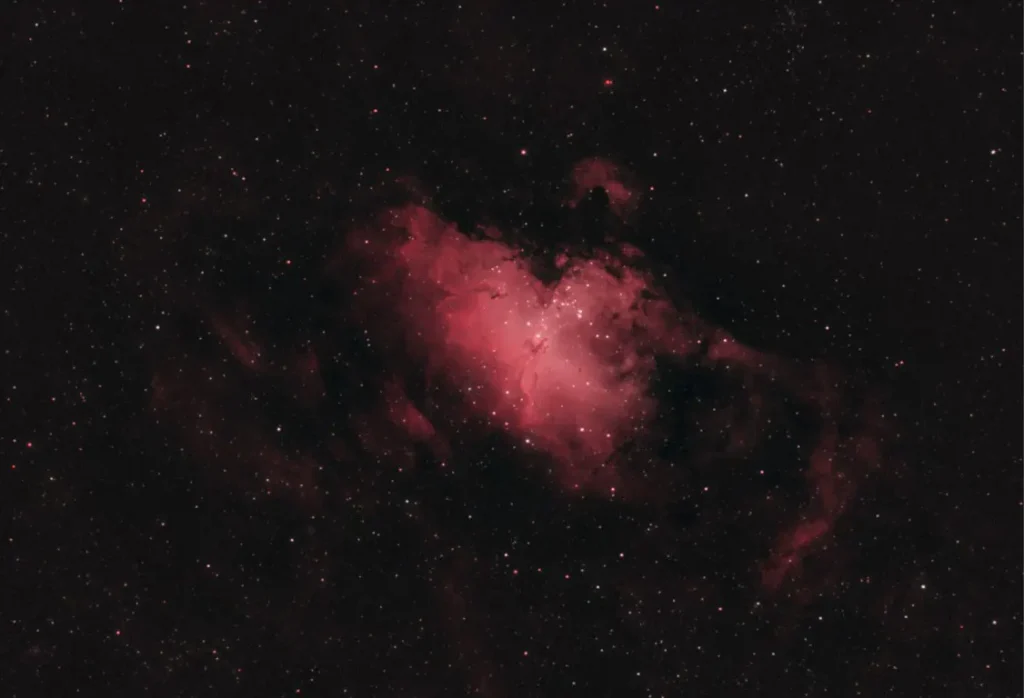
The cluster’s 8,100+ stars provide a brilliant glow on the gases surrounding it.
2. The Great Cluster In Hercules (M13)
The most stunning globular cluster inside the northern hemisphere is second on our list of the 15 most excellent Astrophotography objects to capture in the summer.
About 500,000 stars make up Messier 13, or “The Large Globular Cluster in Hercules.”
A faint hazy patch inside the sky may be seen with the human eye in a dark area free of light pollution. Using binoculars or a telescope, the cluster may be seen in more detail.
3. The Trifid Nebula (M20)
Some of our galaxy’s younger stars may be found in the Trifid Nebula and its surrounding surroundings.
The gas that surrounds the formation of new blazing stars may be seen in two red or blue regions that are often referred to as “lobes.”
If you use an unaltered DSLR camera to capture the red Hydrogen-Alpha gases, you will have difficulty catching them.
Still, they will become more noticeable after three hours of exposure under a clear sky.
4. The Lagoon Nebula (M8)
Summer astrophotography just got a lot better! Located in the direction of Sagittarius, this Lagoon Nebula is a vast, brilliant, and colorful cloud of gas.
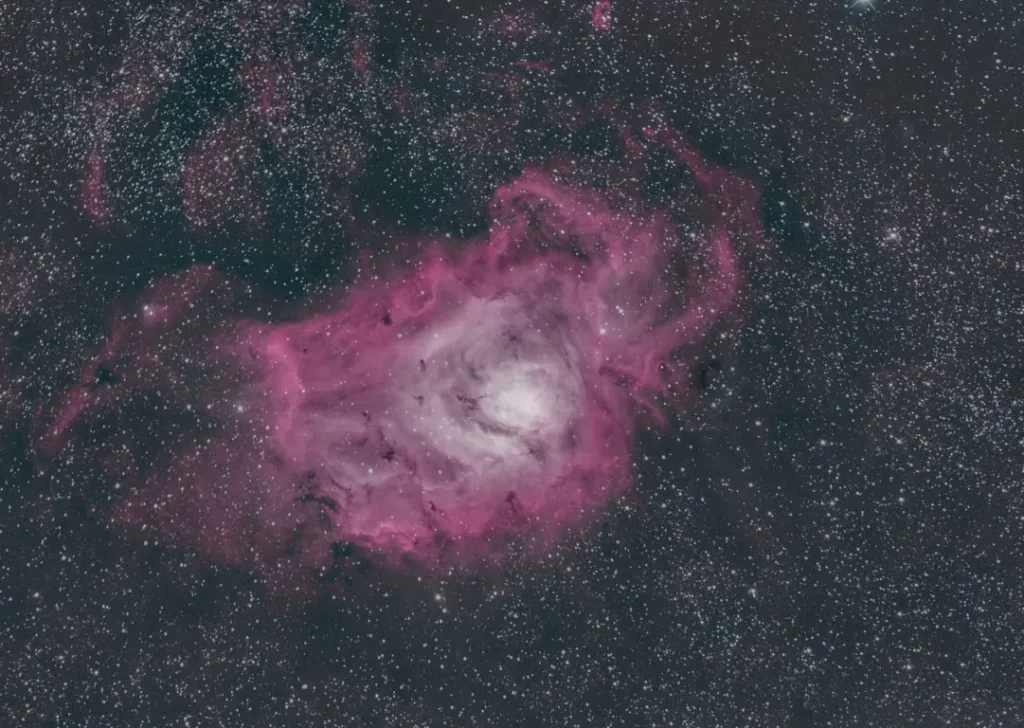
The M8 is easy to shoot using an unaltered DSLR camera and doesn’t need a lot of exposition time to look good.
5. The North America (Ngc 7000) & The Pelican Nebulae (Ic 5070)
Two excellent options for astrophotography who like wide-field pictures are the North America Nebula (NGC 7000) and the Pelican Nebula (IC 5070).
Due to the diffuse and faint nature of their gases, even if they are enormous, you won’t be able to see them there with the naked eye.
The grey light may be seen with binoculars or a telephoto lens. When using a telescope, a UHC filter is advised, but you won’t be able to have any forms or features unless you take a long exposure picture with a camera to capture them.
6. Messier 75
Messier 75 contain more than 400,000 stars, making it the most densely packed globular group in the Messier inventory.
Most telescopes cannot see more than a hazy glowing orb with a brilliant center while looking at this celestial object.
Despite its vastness, this is not owing to how far away it is. An object known as M75 is approximately 47,600 light-years from the Milky Way’s galactic center.
7. The Dumbbell Nebula (M27)
Charles Messier discovered the Dumbbell Nebula in 1764, and it is an excellent subject for novice astronomers to photograph.
Messier 27 is one of the most apparent planetary nebulae with binoculars and telescopes.
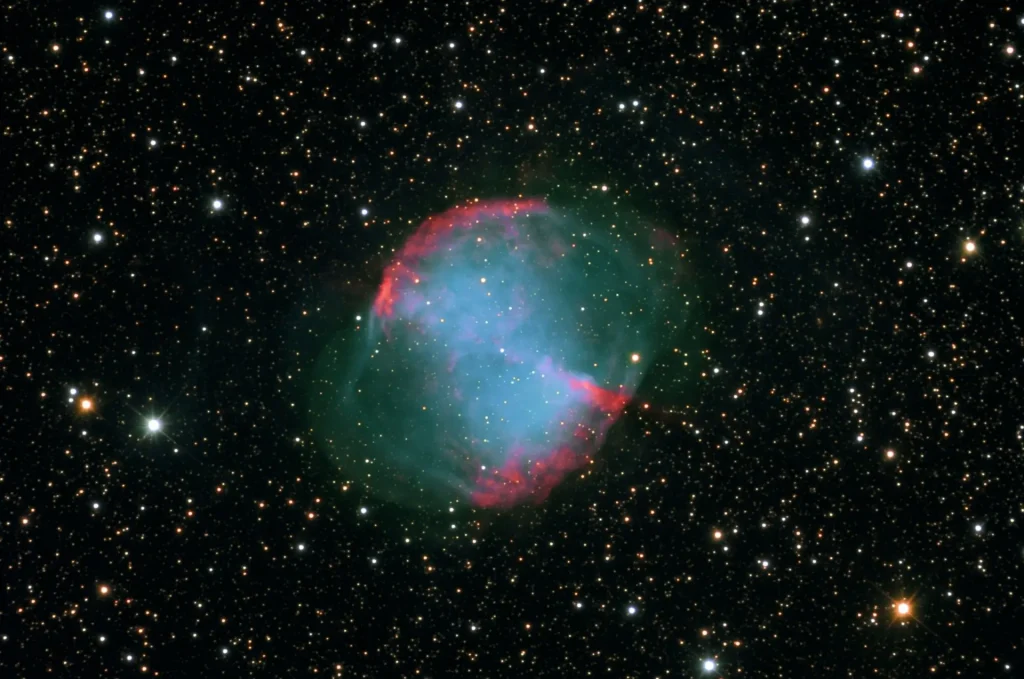
There are so many intricacies in the gaseous nebulosity that you may even discern the form of a dumbbell in it!
8. Rho Ophiuchi
In our view, Rho Ophiuchi is the ideal wide-field object for Astrophotography during the summer months.
There is a cloud complex in the sign of Ophiuchus, which is placed precisely next to the Milky Way band’s brightest part.
9. The Ring Nebula (M57)
Astronomical object Messier 57 is located in the constellations of Lyra. The Ring Nebula, M57, was given its name because of its round/oval form.
A telescope’s eyepiece reveals an unexpectedly sharp object that shines out in the blackness of space, given its diminutive size.
10. The Wild Duck Cluster (M11)
At a range of 6,200 light-years, Messier 11 is the furthest open cluster that can be viewed with the naked eye in the Messier catalog.
The stars in the sky in the cluster appear to form a triangle, suggesting a flock of ducks in flight, thus the moniker “Wild Duck Cluster.”
Astrophotography Targets By Month
- January: Mostly Nebulae.
- February: Nebulae and Clusters
- March: Galaxies and Clusters
- April: Astronomical duos and groups throughout the galaxy
- May: Galaxy Forms Come in a Wide Variety
- June: More Galaxies and More Globular Clusters
- July: Just a few globular clusters
- August: Emission Nebulae and Planetary Nebulae
- September: Autumn Assortment
- October: Trick-or-Treat Ideas for Halloween
- November: The Great Galaxies
- December: Celestial Potpourri
Astrophotography Targets By The Focal Length
The field of vision will be reduced, but the magnification will be increased, making it perfect for planet and moon observations.
Astrophotography and observation of galaxies, nebulas, and other deep sky objects benefit from a greater field of view provided by a shorter focal length.
- f/2.0-2.8 at 100mm effective focal length
- F/2.8-3.2, the effective focal length of 200 millimetres
- f/2.8-3.2, 300mm effective focal length
- f/5.6 and a focal length of 750mm
- f/5.6 and a focal length of 1000mm
- At f/5.6, the effective focal length ranges from 2000-3000mm
Astrophotography Targets By Season
- The Leo Triplet
Our personal favorite is the Leo Triplet because it provides a glimpse of three unique galaxies at once. M65, M66, & NGC 3628 are the names of these galaxies.
This is an excellent target for you if you are using a telescope with a focal distance of less than 1000mm, such as a tiny refractor.
- Markarian’s Chain – The Virgo Cluster
Do you recall how much we said you’d be eating this season?
The Markarian’s Chain, on the other hand, will provide immediate sustenance! More than eight galaxies, including numerous Messier objects, make up Markarian’s Chain.
Any telescope may see a chain of eight galaxies in the Virgo Cluster, situated in the core of the vast galaxy group.
Best Astrophotography Targets Without A Telescope
- The Horsehead & Flame Nebula
One of Orion’s most impressive sights is a target that most people overlook.
Because they cross Alnitak, the furthest left star in Orion’s belt, the combination of Horsehead & Flame nebulae may be considerably easier to see.
It would help if you did not have any trouble locating Orion’s leftmost star, as it’s the simplest constellation to see.
The Flame Nebula may be seen just underneath it, while the Horsehead Nebula can be found directly to its right.
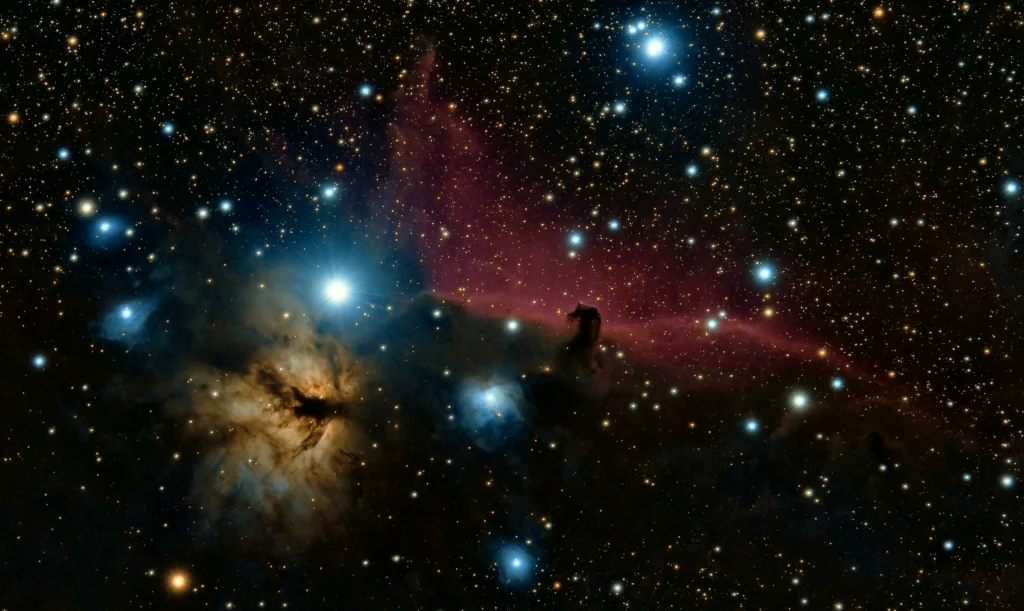
The nebula, like the Pleiades, is the star of the show, but it will take a long time to build up to its full potential. A two- or three-hour shoot will provide a stunning image, even if the sky is cloudy.
- The Rosette Nebula (C49)
The Rosette Nebula is the last object beginners should aim for. This is one of the largest and most magnificent deep space objects.
In addition, it is relatively simple to find. The Rosette nebula may be found again by looking towards the constellation Orion.
Betelgeuse is the star on Orion’s left shoulder, while the Rosette nebula is located just to its left.
You should be able to observe weak nebulosity to aid with framing after taking a brief test photo at an ISO setting of 100 or higher.
This is the nebula’s central star cluster. 2 or 3 hours of cumulative time may produce a highly regarded photograph in the perfect situation.
Conclusion
Our goal is that these celestial sights have piqued your interest in deep-space photography. The initial photos you take may not be the greatest, so do not stress. You will get there if you put in the time and effort.
Justin Parker is a professional photographer and has been in the industry since 2007. He attended the University of Georgia. Justin combines his passion for photography and his interest in writing to give life to this blog which talks about photography in order to help and inspire young photographers.

